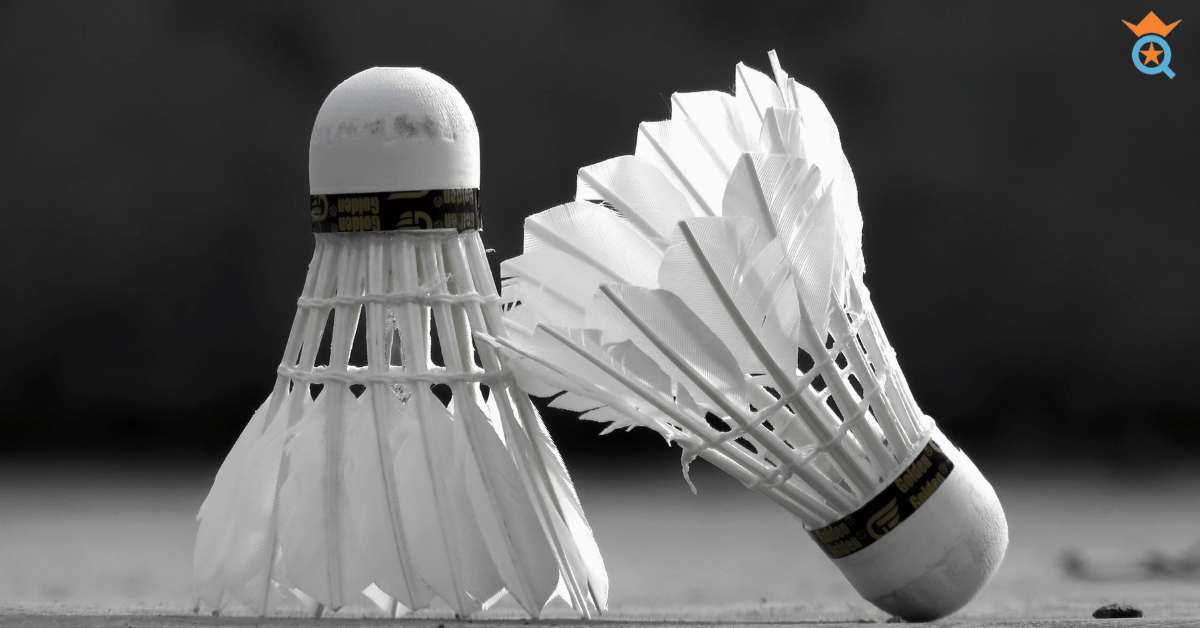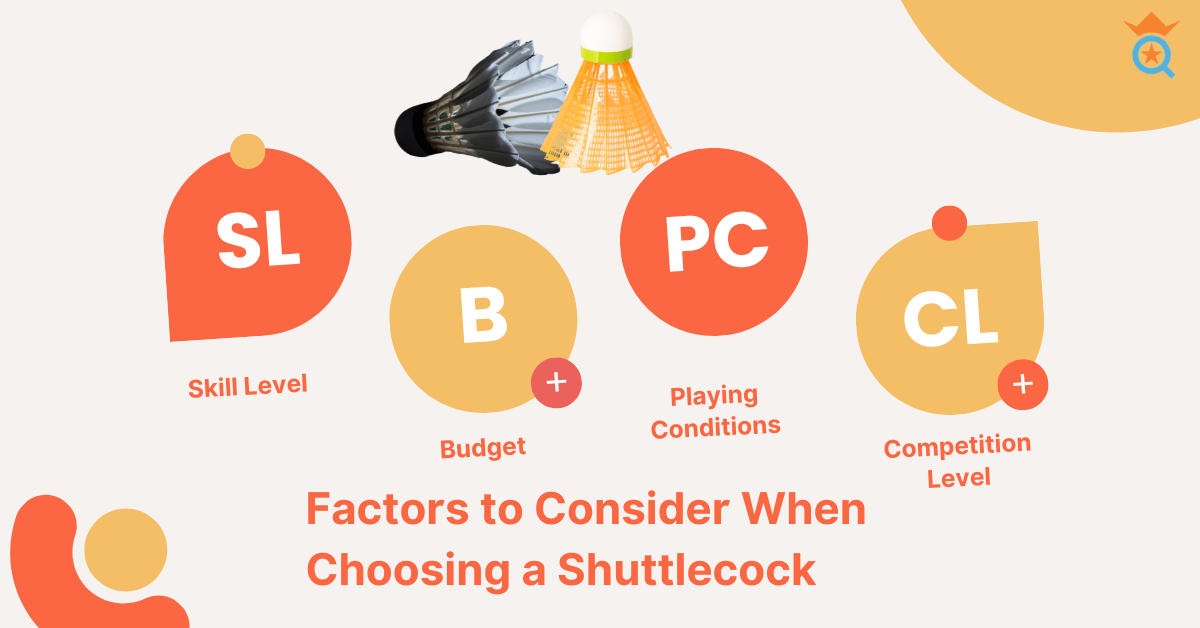Badminton is a popular sport enjoyed by millions of people worldwide. One of the essential components of the game is the shuttlecock, which can significantly impact a player's performance and overall experience.
There are two main types of badminton shuttlecocks: feather and synthetic.
Let's dive into the differences between these two types, their advantages and disadvantages, and factors to consider when choosing the right badminton shuttlecock for your needs.

2. Feather Shuttlecocks
Construction and Material
Feather shuttlecocks are made from the feathers of ducks or geese, typically using 16 feathers per shuttlecock. The feathers are carefully selected and sorted by size, weight, and stiffness before being attached to a cork or composite material base. The most common types of feathers used are duck or goose feathers, with goose feathers being considered higher quality. Some brands, such as Golden Eagle Shuttlecocks, even use specific types of feather birdies for their products.
Advantages:
- Flight Consistency: Feather shuttlecocks are known for their accurate and consistent flight path, thanks to the natural properties of feathers. The air resistance created by the feather skirt provides better control, allowing players to execute precise shots.
- Feel and Sound: Many players prefer the feel and sound of a feather shuttlecock, as it provides a satisfying "thud" when struck by the racket. This feedback can help players develop a better sense of timing and touch.
- Preferred by Professionals: Feather shuttlecocks are the choice of professional players and are used in major badminton tournaments worldwide. Their superior flight characteristics make them ideal for high-level competition.
Disadvantages:
- Durability: Feather shuttles are more fragile than their synthetic counterparts, as the feathers can easily break or become damaged during play. This means they need to be replaced more frequently, increasing the overall cost.
- Cost: Due to the materials and craftsmanship required to make feather shuttlecocks, they tend to be more expensive than synthetic options. When buying a feather shuttle, whether online or in-store, expect to pay more compared to their synthetic counterparts.
- Maintenance: A feather shuttlecock is sensitive to humidity and temperature changes, which can affect its performance. They may require special storage conditions to maintain optimal playing characteristics, such as keeping them in a shuttlecock tube.

3. Synthetic Shuttlecocks
Construction and Material
Synthetic shuttlecocks, also known as plastic or nylon shuttles, are made from synthetic materials such as nylon or PVC. The skirt is typically molded into its conical shape, while the head can be made from cork, rubber, or other composite materials. Synthetic shuttlecocks consist of various types, including plastic shuttlecocks and nylon shuttlecocks, which differ in material composition and performance.
Advantages:
- Durability: Synthetic shuttlecocks are more robust and less prone to damage compared to feather shuttlecocks. This makes them an ideal choice for recreational play, training, and beginners who may not yet have the skills to avoid damaging shuttlecocks during play.
- Cost: The use of synthetic materials and mass production techniques make synthetic shuttlecocks more affordable than feather options. This can be especially appealing for players on a budget or those who play badminton frequently and require a large number of shuttlecocks.
- Low Maintenance: Synthetic shuttlecocks are less sensitive to environmental factors such as humidity and temperature, making them easier to store and maintain.
Disadvantages:
- Flight Characteristics: Synthetic shuttlecocks generally have a less accurate and consistent flight path compared to feather shuttlecocks. This can make it more challenging to execute precise shots and may affect gameplay, particularly at higher skill levels.
- Feel and Sound: Some players find that synthetic shuttlecocks lack the satisfying "thud" sound and feel that feather shuttlecocks provide. This can make it more difficult to develop a sense of timing and touch during play.
- Less Suitable for Professional Play: Due to their inferior flight characteristics, synthetic shuttlecocks are not commonly used in professional tournaments or high-level competitions.

Factors to Consider When Choosing a Shuttlecock
When deciding between feather and synthetic shuttlecocks, consider the following factors:
- Skill Level: Beginners and recreational players may benefit from the durability and affordability of synthetic shuttlecocks, while more advanced players may prefer the superior flight characteristics of feather shuttlecocks.
- Budget: If cost is a primary concern, synthetic shuttlecocks may be a more economical choice due to their lower price and increased durability.
- Playing Conditions: If you play in a humid or temperature-sensitive environment, synthetic shuttlecocks may be a better option due to their lower maintenance requirements.
- Competition Level: For players participating in high-level competitions or professional badminton matches, feather shuttlecocks are the preferred choice due to their superior flight characteristics.
It's also important to consider the type of badminton you'll be playing. For outdoor badminton or Air Badminton, synthetic shuttlecocks, particularly nylon material options, are usually more suitable due to their increased durability and resistance to wind interference.

Conclusion
In conclusion, both feather and synthetic badminton shuttlecocks have their advantages and disadvantages. Feather shuttlecocks offer better flight consistency and are preferred by professional players, but they are more expensive and less durable than synthetic options. Synthetic shuttlecocks, including plastic and nylon shuttlecocks, are more affordable and durable, making them a popular choice for recreational play, outdoor badminton, and beginners.
Ultimately, the choice between feather and synthetic shuttlecocks will depend on factors such as skill level, budget, playing conditions, and competition level. By understanding the differences between these two types of shuttlecocks, you can make an informed decision that best suits your needs and enhances your badminton experience.
Whether you're playing badminton for fun, participating in professional badminton matches, or looking to buy shuttlecocks online, considering these factors will help you choose the right type of shuttlecock for your game.
Remember that no matter which type of shuttlecock you choose, practice and dedication are essential in improving your badminton skills. Shuttlecocks are just one component of this fast-paced and exciting racket sport, so keep playing, learning, and enjoying the game!
FAQs
Does synthetic and feather shuttlecock feel the same in play?
No, synthetic and feather shuttlecocks do not feel the same during play. Feather shuttlecocks provide a more satisfying "thud" sound and feel when struck by the racket, while synthetic shuttlecocks may not offer the same level of feedback. This difference can affect a player's sense of timing and touch.
Are feather or plastic shuttles better?
Whether feather or plastic shuttles are better depends on factors like skill level, budget, playing conditions, and competition level. Feather shuttles offer superior flight consistency and are preferred by professionals but are more expensive and less durable. Plastic shuttles are more affordable and durable, making them suitable for beginners and recreational play.
Can a synthetic shuttlecock be used in a sports competition?
Synthetic shuttlecocks are generally not used in professional badminton tournaments or high-level competitions due to their inferior flight characteristics compared to feather shuttlecocks. However, they can be used in recreational or lower-level competitions where durability and affordability are prioritized.








